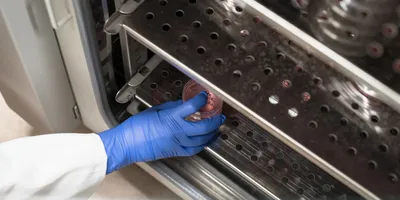Cell phones are an essential part of modern life, but their presence in laboratory environments can pose significant risks. From contamination hazards to safety concerns, the use of mobile devices in labs should be carefully regulated. Below, we explore five dangers of using a cell phone in a laboratory setting and why their use should be minimized.
1. Contamination Risk
One of the most critical dangers of using a cell phone in a laboratory is the risk of contamination. Mobile phones are known to harbor a vast number of bacteria and pathogens. Studies, such as one published in Microorganisms (2020), found that cell phones can carry contaminants from one area to another, increasing the risk of cross-contamination in sterile environments.
Potential Issues:
- Bacteria and chemicals can transfer from hands to phone screens.
- Pathogens can spread from lab environments to personal spaces.
- Risk of contaminating sensitive samples and experiments.
To mitigate this risk, many labs enforce strict policies against using personal devices in controlled environments.
2. Fire and Explosion Hazards
Cell phones contain lithium-ion batteries, which have been known to overheat, catch fire, or even explode under certain conditions. According to the National Fire Protection Association (NFPA), improper handling of electronic devices in hazardous environments can lead to dangerous accidents.
Specific Risks in a Lab Setting:
- Laboratories with flammable chemicals can become ignition points if a phone sparks.
- Lithium-ion battery failures can cause fires in volatile areas.
- Static electricity from cell phones can contribute to explosions in labs working with combustible gases.
Labs handling flammable substances should enforce a strict no-phone policy to prevent these risks.
3. Distraction and Reduced Focus
The use of cell phones can lead to distractions, which is particularly dangerous in a laboratory where precision and focus are crucial. A study from the Journal of Safety Research (2019) found that multitasking with a mobile phone can reduce cognitive performance by up to 40%.
Consequences of Distraction in a Lab:
- Increased risk of handling hazardous materials incorrectly.
- Reduced awareness of surroundings, leading to potential accidents.
- Missed critical steps in procedures, compromising experiment results.
To maintain safety and accuracy, laboratories should encourage full attention to tasks and discourage unnecessary phone use.
4. Electromagnetic Interference (EMI)
Cell phones emit electromagnetic radiation, which can interfere with sensitive laboratory equipment. According to the Institute of Electrical and Electronics Engineers (IEEE), electromagnetic interference from mobile devices can disrupt the operation of precision instruments.
Examples of EMI Issues:
- Disruptions in electronic balances and spectrophotometers.
- Malfunctioning of sensitive analytical instruments.
- Errors in medical and biotech equipment due to signal interference.
Many research and clinical laboratories implement policies restricting the use of mobile devices in areas where sensitive equipment is in operation.
5. Breach of Confidentiality and Data Security
Laboratories often deal with proprietary research, confidential patient data, and sensitive intellectual property. Cell phones equipped with cameras and internet access pose a significant security risk. According to the U.S. National Institute of Standards and Technology (NIST), unauthorized mobile device use can lead to data breaches and regulatory violations.
Risks to Confidentiality:
- Unauthorized photography or video recording of experiments and research data.
- Unsecured mobile devices accessing confidential laboratory information.
- Risk of malware infections from personal devices connected to lab networks.
To protect sensitive data, laboratories should implement clear policies regarding cell phone usage and consider secure alternatives for communication within the facility.
Conclusion
While cell phones are indispensable in many aspects of daily life, their use in laboratories can pose serious risks, including contamination, fire hazards, distractions, electromagnetic interference, and security threats. To maintain safety, compliance, and operational efficiency, laboratories should establish clear guidelines on mobile device usage and encourage alternative communication methods when necessary.
By understanding these dangers and implementing best practices, laboratory professionals can create a safer and more controlled work environment.
Cell phones are an essential part of modern life, but their presence in laboratory environments can pose significant risks. From contamination hazards to safety concerns, the use of mobile devices in labs should be carefully regulated. Below, we explore five dangers of using a cell phone in a laboratory setting and why their use should be minimized.
1. Contamination Risk
One of the most critical dangers of using a cell phone in a laboratory is the risk of contamination. Mobile phones are known to harbor a vast number of bacteria and pathogens. Studies, such as one published in Microorganisms (2020), found that cell phones can carry contaminants from one area to another, increasing the risk of cross-contamination in sterile environments.
To continue reading this article, sign up for FREE to

Membership is FREE and provides you with instant access to eNewsletters, digital publications, article archives, and more.











